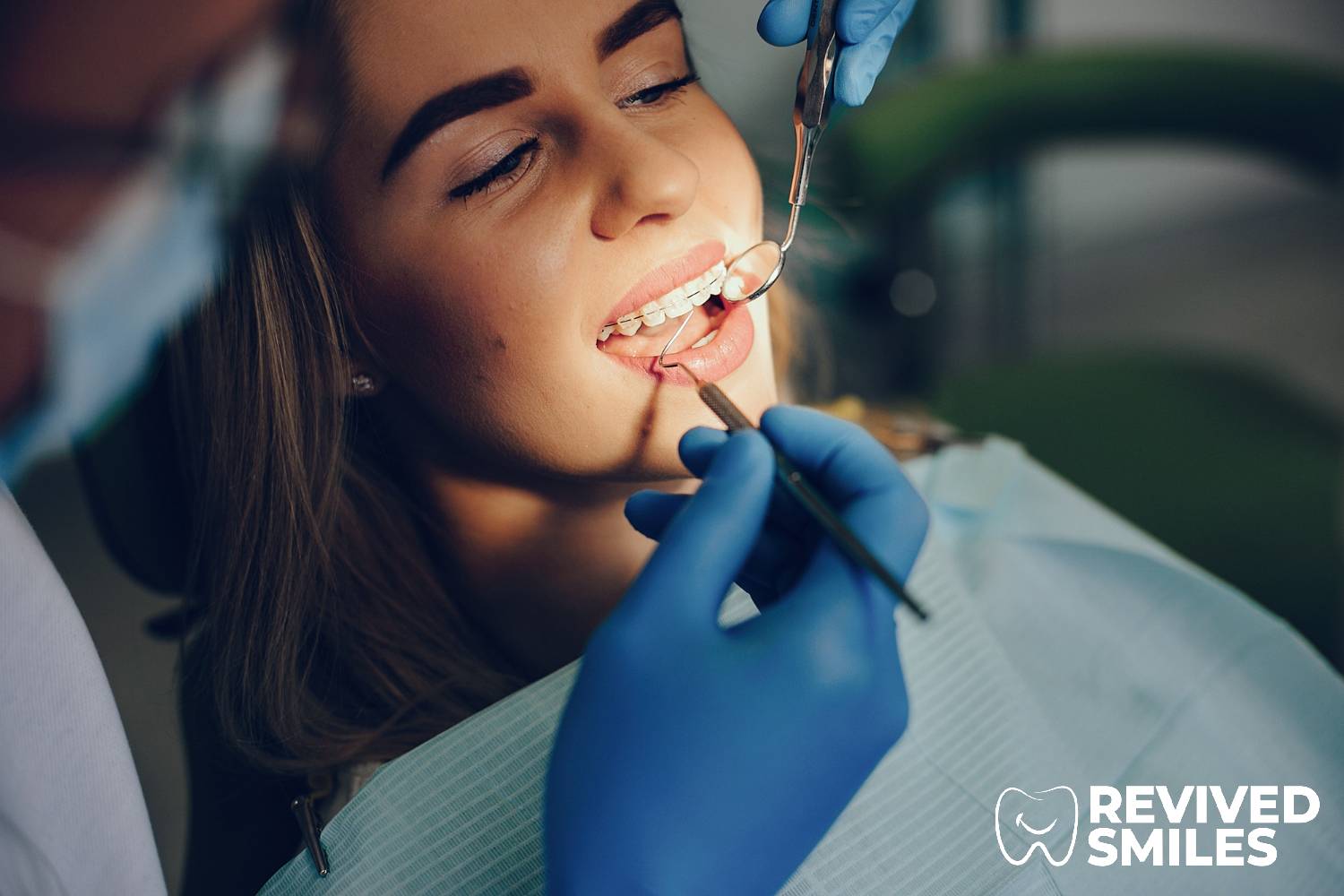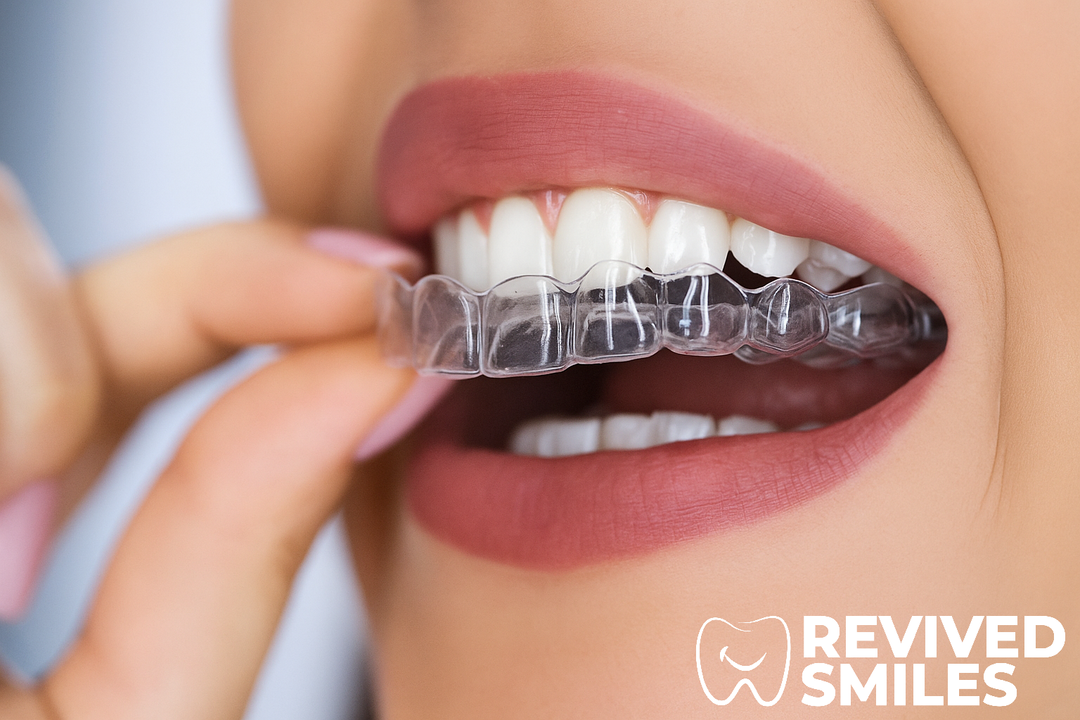Aleta dental vs. prótesis parcial: ¿Qué opción de reemplazo dental es adecuada para usted?

Perder un diente puede ser una experiencia inquietante. Puede afectar su capacidad para comer, hablar y sonreír con seguridad. Afortunadamente, la odontología moderna ofrece diversas opciones de reemplazo dental para restaurar su sonrisa de aspecto natural, siendo las prótesis parciales metálicas una de las opciones más fiables a largo plazo.
Tanto las aletas dentales como las prótesis parciales deben tener en cuenta la estética y la funcionalidad de los dientes existentes para garantizar una sonrisa de aspecto natural y un espaciado adecuado.
Si está considerando una prótesis dental aleta o parcial, no está solo. Muchas personas se enfrentan a esta decisión y consideran factores como la comodidad, la durabilidad y el costo. Comprender las diferencias clave entre las prótesis dentales aleta y parcial le ayudará a elegir la mejor solución para reemplazar los dientes faltantes, manteniendo la funcionalidad oral y la confianza en sí mismo.
¿Qué son las aletas dentales?
Una aleta dental es una solución temporal de reemplazo dental que se utiliza para rellenar el espacio creado por la falta de uno o más dientes. Es una prótesis parcial removible hecha de acrílico resistente que se adapta al paladar.
Las aletas dentales están diseñadas como una solución temporal hasta que se pueda proporcionar una opción más permanente, como un implante dental o una prótesis parcial. Se suelen utilizar cuando las encías y el hueso cicatrizan tras un implante o cuando el paciente espera una solución más permanente.
Esto hace que las aletas dentales sean una excelente opción para quienes necesitan una solución rápida para mantener su sonrisa y funcionalidad bucal mientras se preparan para un reemplazo de diente más duradero.
¿Qué son las dentaduras postizas parciales?

Las prótesis parciales son aparatos dentales removibles que reemplazan uno o más dientes faltantes. Están diseñadas para integrarse con los dientes naturales y restaurar la función y la estética de la cavidad bucal.
A diferencia de las aletas dentales, las prótesis parciales son una solución más permanente para el reemplazo de dientes. Consisten en una base personalizada hecha de materiales como metal o acrílico , diseñada para adaptarse a los contornos únicos de la boca de cada persona. Dentro de esta base se encuentran dientes protésicos que imitan la apariencia de los dientes naturales faltantes.
Esto hace que las dentaduras postizas parciales sean una opción confiable y duradera para quienes buscan reemplazar múltiples dientes faltantes y restaurar su sonrisa natural.
Aletas dentales: una solución temporal
Una prótesis dental aleta es una prótesis parcial removible diseñada como reemplazo temporal de dientes para personas que han perdido piezas dentales debido a una extracción, enfermedad periodontal o lesión. Esta prótesis ligera aleta rellena el espacio dejado por los dientes faltantes y evita que los dientes adyacentes se desplacen.
Los dientes flipper son una solución dental práctica para la falta de piezas dentales. Ofrecen la ventaja de ser asequibles y rápidos de fabricar, aunque carecen de la durabilidad y estabilidad de las opciones más permanentes. Los flipper se fabrican con bases de plástico del color de las encías y dientes protésicos adheridos.
Se fijan mediante ganchos de plástico o succión. Si bien pueden ser una solución económica y rápida, no ofrecen la durabilidad ni la estabilidad de una solución más permanente, como las prótesis parciales o los implantes dentales.
Beneficios de las aletas dentales
Un diente de aleta ofrece varias ventajas:
-
Rápido y asequible : una aleta es una opción de reemplazo de dientes económica, que a menudo está lista en solo unos días.
-
Mejora estética : ayuda a mantener una sonrisa de aspecto natural y mejora la confianza en uno mismo.
-
No invasivo : no necesita cirugía ni procedimientos dentales extensos.
-
Protege la salud bucal : evita que los dientes naturales circundantes se desalineen.
-
Ideal para uno o dos dientes : especialmente adecuado para reemplazar uno o dos dientes, lo que lo convierte en una excelente opción en comparación con las dentaduras postizas parciales para pérdidas de dientes más extensas.
Desventajas de las aletas dentales
Si bien las aletas dentales pueden ser una buena solución temporal , tienen limitaciones:
-
No es una solución a largo plazo : es propenso al desgaste y requiere reemplazos frecuentes.
-
Menos estable : puede moverse o desplazarse mientras come o habla.
-
Soporte de masticación limitado : no está diseñado para masticar con fuerza, lo que dificulta comer ciertos alimentos.
-
Posible irritación de las encías : si no se mantienen adecuadamente, las aletas pueden contribuir a la enfermedad de las encías o recesión de las encías .
Prótesis parciales: una solución más permanente
Las prótesis parciales ofrecen una solución a largo plazo para reemplazar los dientes faltantes. A diferencia de las aletas, ofrecen mayor estabilidad, comodidad y durabilidad, lo que las convierte en una excelente opción para quienes necesitan reemplazar uno o más dientes.
Las dentaduras postizas parciales removibles sirven como una solución no invasiva, rentable y personalizable para reemplazar múltiples dientes faltantes y al mismo tiempo garantizar un ajuste cómodo con los dientes naturales restantes.
Las prótesis parciales pueden fabricarse con estructura metálica, resina flexible o acrílico, según las necesidades del paciente. Las prótesis parciales metálicas ofrecen la máxima durabilidad, mientras que los modelos de resina flexible ofrecen un ajuste más cómodo.
parcial acrílico Las dentaduras postizas son una opción más asequible , pero carecen de la resistencia de los diseños basados en metal.
Beneficios de las prótesis parciales
-
Más fuerte y más duradero : diseñado para uso a largo plazo con el cuidado adecuado.
-
Mayor estabilidad y comodidad : las dentaduras postizas parciales permanecen seguras en su lugar, lo que ofrece una mejor funcionalidad bucal.
-
Conserva los dientes naturales restantes : ayuda a mantener la estructura facial y previene la recesión de las encías.
-
Admite una abolladura completa : puede reemplazar tres o más dientes o incluso un arco completo en algunos casos.
-
Dientes de reemplazo adheridos : las dentaduras parciales consisten en dientes de reemplazo adheridos a una base que imita los dientes naturales, proporcionando una solución cómoda y ventajosa para la salud bucal.
Desventajas de las prótesis parciales
-
Costo inicial más alto : más caro que un diente de aleta, pero una mejor inversión a largo plazo.
-
Se requiere un período de adaptación : lleva tiempo acostumbrarse a usarlo y hablar con él.
-
Requiere mantenimiento regular : necesita un cuidado adecuado y una limpieza regular para evitar la acumulación de placa.
-
Dentaduras postizas tipo aleta : diseñadas para sostener uno o más dientes protésicos y brindar soporte para el diente de reemplazo.
Diferencias clave: prótesis dental aleta vs. prótesis parcial
Si bien tanto las aletas dentales como las dentaduras postizas parciales se utilizan para reemplazar dientes faltantes, existen diferencias clave entre ambas.
Las prótesis dentales son soluciones temporales que se utilizan en situaciones específicas, mientras que las prótesis parciales son más versátiles y pueden utilizarse como una opción de reemplazo dental a largo plazo. Las prótesis dentales se utilizan generalmente para reemplazar uno o dos dientes faltantes, mientras que las prótesis parciales pueden reemplazar varios.
Además, las prótesis parciales son más estables y duraderas que las aletas dentales, lo que proporciona un mejor soporte para masticar y hablar. Comprender estas diferencias puede ayudarle a elegir la mejor opción para sus necesidades dentales específicas.
Materiales utilizados para prótesis parciales
Las prótesis parciales pueden fabricarse con diversos materiales, como acrílico, metal o un termoplástico flexible. Los dientes suelen estar hechos de porcelana, lo que ofrece una solución natural y duradera.
La elección del material depende de las necesidades y preferencias de cada persona. Por ejemplo, las prótesis parciales acrílicas son una opción popular para quienes buscan una opción más económica, mientras que las prótesis parciales metálicas suelen ser las preferidas por su durabilidad y resistencia.
Las opciones termoplásticas flexibles ofrecen un ajuste cómodo y son menos propensas a causar irritación. Cada material ofrece sus propias ventajas, lo que permite un enfoque personalizado para el reemplazo dental.
Comparación de aletas dentales y prótesis parciales
A la hora de elegir entre una prótesis dental o una parcial, es importante tener en cuenta sus necesidades dentales.
Una prótesis dental aleta es ideal para quienes necesitan una solución temporal mientras esperan una solución más permanente, como una prótesis parcial o un implante dental. Es ligera, económica y se fabrica rápidamente. Sin embargo, carece de durabilidad y no proporciona el soporte masticatorio necesario para un uso prolongado.
Las prótesis parciales, por otro lado, son una mejor opción para quienes buscan un reemplazo dental permanente. Están fabricadas con materiales más resistentes, lo que proporciona mayor estabilidad, comodidad y funcionalidad bucal. A diferencia de las aletas, distribuyen la presión masticatoria de manera uniforme, reduciendo la tensión en los dientes restantes y mejorando la salud de las encías.
Las soluciones de reemplazo de dientes, como las aletas dentales y las dentaduras parciales, varían en su naturaleza temporal o permanente y están diseñadas para imitar la apariencia y la función de los dientes naturales.
Comparación de costos: prótesis dentales abatibles vs. prótesis parciales
Uno de los factores más importantes al elegir entre prótesis dentales abatibles y parciales es el costo. A continuación, un desglose general:
-
Aleta dental : $200 - $600 (asequible pero temporal)
-
Prótesis parcial de metal : $400 - $2,500 (costo más alto, pero más duradera)
-
Implante dental (de referencia) : $3,000 - $5,000 por implante (permanente, pero caro)
Si bien las aletas dentales pueden parecer la mejor solución debido a su bajo costo inicial, suelen requerir múltiples reemplazos, lo que las encarece a largo plazo. Las prótesis parciales ofrecen una solución más rentable y duradera, con mayor durabilidad y una mejora estética.
Durabilidad y uso a largo plazo
Las aletas dentales no están diseñadas para resistir un uso prolongado y suelen usarse como una solución temporal. Su duración puede variar entre seis meses y dos años, dependiendo de la calidad del aparato y de la salud bucal de la persona.
Las prótesis parciales, por otro lado, pueden durar hasta 15 años con el cuidado adecuado y el mantenimiento regular. Sin embargo, con el tiempo podrían requerir reemplazo debido al desgaste. Las revisiones dentales regulares son esenciales para garantizar la longevidad tanto de las aletas dentales como de las prótesis parciales.
Manteniendo una buena higiene bucal y siguiendo las instrucciones de cuidado de su dentista, puede prolongar la vida útil de su solución de reemplazo de dientes y mantener su sonrisa luciendo lo mejor posible.
Cómo cuidar su dentadura postiza parcial o aleta
Un cuidado adecuado es esencial para prolongar la vida útil de las aletas y las prótesis parciales . Aquí tienes algunos consejos para mantenerlas en óptimas condiciones:
-
Limpie diariamente con un cepillo suave y un limpiador suave para eliminar las partículas de comida.
-
Evite el agua caliente ya que puede deformar el material.
-
Déjalo en remojo durante la noche. Solución limpiadora de dentaduras postizas para mantener la frescura.
-
Visite a su dentista periódicamente para realizar ajustes y limpiezas profesionales.
-
Practique una buena higiene bucal para prevenir enfermedades de las encías y mantener los dientes sanos.
¿Cuál opción es la adecuada para usted?
Si necesita una solución temporal y económica, un diente de aleta podría ser la mejor opción. Es ideal para un uso a corto plazo mientras espera una prótesis parcial o un implante dental.
Si busca una solución estable y duradera, las prótesis parciales son la mejor opción. Si bien requieren una mayor inversión inicial, ofrecen mayor durabilidad, comodidad y beneficios para la salud bucal, lo que las convierte en una solución integral para quienes carecen de uno o más dientes.
Si está considerando opciones de reemplazo dental, consulte las prótesis parciales transparentes flexibles y las prótesis parciales acrílicas disponibles en Revived Smiles . Elegir el reemplazo dental adecuado no solo le devolverá su hermosa sonrisa, sino que también mejorará su autoestima y su salud bucal.





Dejar un comentario